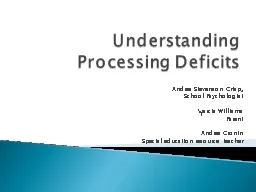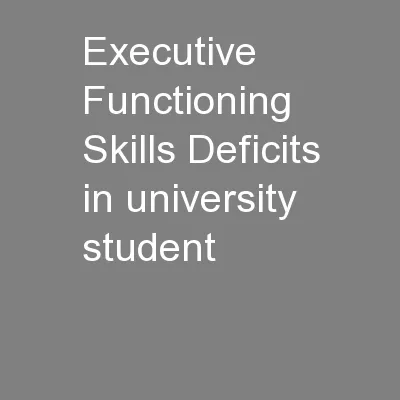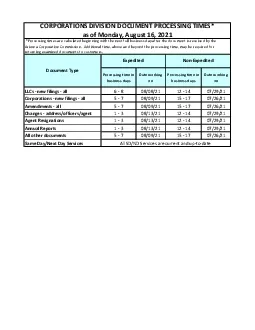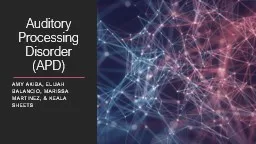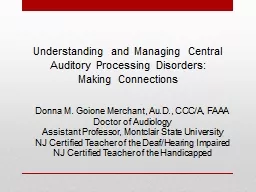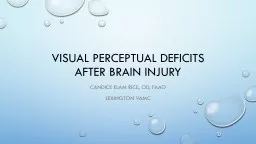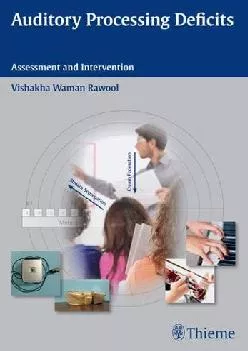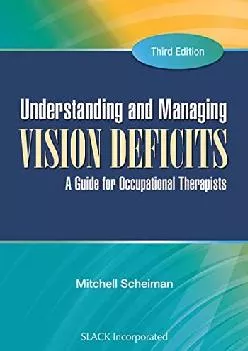PPT-Understanding Processing Deficits
Author : trish-goza | Published Date : 2016-07-04
Andrea Stevenson Crisp School Psychologist Marcia Williams Parent Andrea Cronin Special education resource teacher Activity Processing refers to how the brain takes
Presentation Embed Code
Download Presentation
Download Presentation The PPT/PDF document "Understanding Processing Deficits" is the property of its rightful owner. Permission is granted to download and print the materials on this website for personal, non-commercial use only, and to display it on your personal computer provided you do not modify the materials and that you retain all copyright notices contained in the materials. By downloading content from our website, you accept the terms of this agreement.
Understanding Processing Deficits: Transcript
Download Rules Of Document
"Understanding Processing Deficits"The content belongs to its owner. You may download and print it for personal use, without modification, and keep all copyright notices. By downloading, you agree to these terms.
Related Documents

